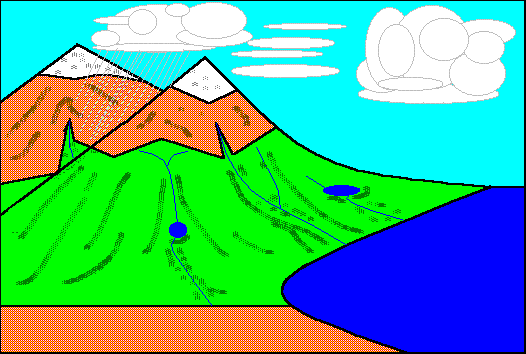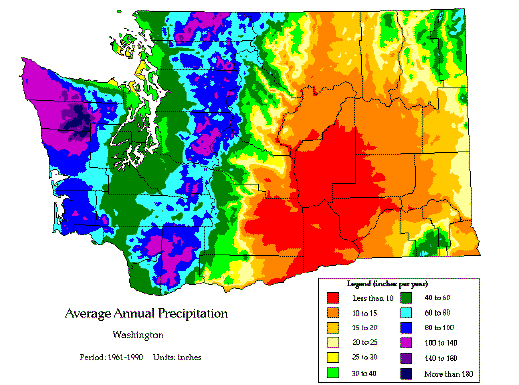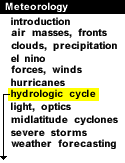
|

Animation by: Bramer
Precipitation is the primary mechanism for transporting water from the atmosphere to the surface of the earth. There are several forms of precipitation, the most common of which for the United States is rain. Other forms of precipitation include; hail, snow, sleet, and freezing rain. A well developed extra-tropical cyclone could be responsible for the generation of any or all of these forms of precipitation.

Photograph by: Hall |
Amounts of precipitation can vary by location. For example, deserts like this one in Nevada, average less than an inch of total precipitation per year. |
| The agricultural Midwest, however, receives approximately 15 inches per year, while tropical rain forests like this one in Hawaii, can receive more than 100 inches of precipitation per year! | 
Photograph by: Bramer |
Amounts of precipitation also vary from year to year. In 1988, an intense drought gripped the Midwestern United States, disrupting agriculture because there was not enough rain to sustain crops. Five years later in 1993, the same area was subjected to severe flooding, greatly reducing the annual harvest because there was too much water for crops to grow.

Image by: Northwest River Forecast Center
A good example of the geographical variability of precipitation is shown here in a plot of average annual precipitation for the state of Washington. Within a distance of 250 miles, annual precipitation totals change from more that 180 inches per year (deep purple) to less than 10 inches per year (bright red)! This distribution is a direct result of the topography of the land. The high precipitation totals are located on the western side of the Cascade mountains, while the extremely low precipitation totals are on the eastern, or lee side of the mountain range.

transport |
|

groundwater |



